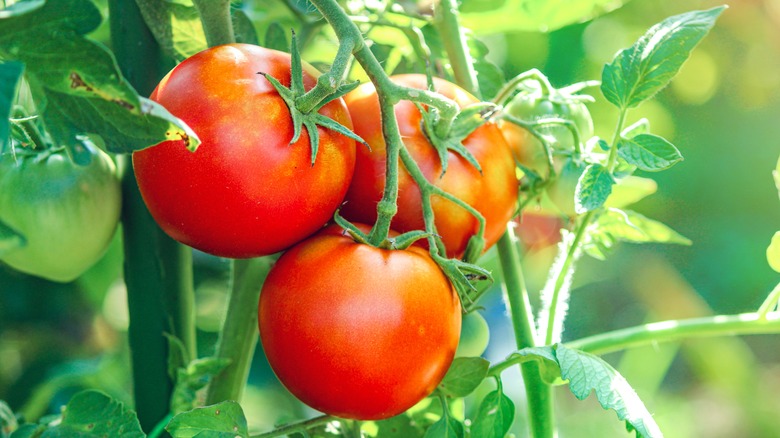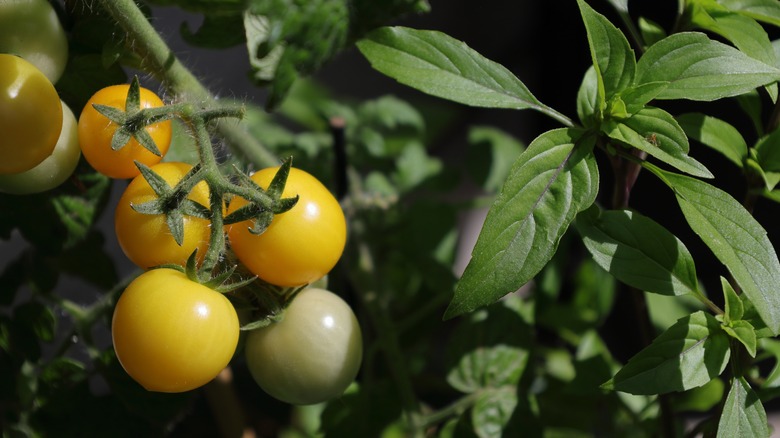The Herb You Should Always Plant Alongside Tomatoes In Your Garden
There are various facts you may not know about tomatoes. For example, did you realize there's a certain herb you should always plant near these delicious red gems in your garden?
A practice known as companion planting fosters a healthier, higher-yield garden by pairing certain crops together for strategic reasons. Tomatoes and basil pair perfectly in recipes — from Giada De Laurentiis' summer pasta to Audrey Hepburn's favorite pasta dish, spaghetti al pomodoro — and they're just as well matched in the garden. Basil is a noted deterrent for tomato-destroying pests like thrips, hornworms (and the moths that lay them), and aphids. The strong smell exuded by basil — which translates into flavor when it's transferred into the kitchen — is off-putting to these insects, and is said to even confuse and disorient them.
In addition to being a natural, non-chemical repellent for pests you don't want, basil also attracts critters you do want in your garden, like butterflies, bees, and ladybugs. While bees and butterflies provide pollinating services, ladybugs will eat those destructive aphids and other bugs, further cutting down on pest damage to your tomato plants.
Basil does even more to help your tomatoes as they grow, too. The herb is believed to actually improve the flavor of the fruits when they share the same soil. Basil also grows quickly, providing shade for the soil to both mitigate moisture evaporation and cool the roots of your slower-growing tomatoes. This companion planting is also linked to eliciting higher yields from tomato crops.
Basil benefits from companion planting, too
It isn't just a one-way relationship when you plant tomato and basil side by side. As the basil helps safeguard the tomatoes in various ways, the tomato vines simultaneously provide shade for their little herb companions. This protects the basil plants from the sun and, in turn, extends their longevity — not only helping preserve the life of the basil but allowing a gardener to harvest the plant for a longer period of time. More herb-fresh pasta sauce and heirloom Caprese salad — yes, please!
There are other benefits for the gardener, too. The two plants thrive in similar growing environments, flourishing in a warm climate with good sun exposure and well-draining soil. They also have similar care needs, like being watered fully and deeply, so a homeowner essentially gets a two-for-one deal in planting and tending to them. Further, since tomatoes and basil don't detract from each other when grown in close quarters, this allows a home gardener to efficiently maximize space by planting them in the same location. It's an ideal scenario for someone with limited growing space.


